- Home
- Simon Winchester
Krakatoa Page 4
Krakatoa Read online
Page 4
The idea of officially sanctioned trading cooperatives was far from new. The British had had the Merchant Adventurers and the Merchant Staplers; they had created the Muscovy Company in 1555 and the Turkey Company in 1583. The Plymouth Company and the Massachusetts Bay Company were established at the beginning of the seventeenth century, to settle colonists. The Hudson's Bay Company, set up half a century later solely to trade, remains today: the Bay, its flagship department stores, can be found in all of Canada's cities (and in not a few more isolated Arctic settlements), and its owner, a cheerfully eccentric peer called Ken Thomson, lives modestly and happily in a suburb of Toronto.
But there was a difference about the VOC. Right from its beginnings, it was cleverly constructed as a joint-stock company. The good burghers of Holland who had initially sent out their own small fleets decided to band together to back a much larger, much more ambitious company, with each backer owning a ‘share’ of this company's value, with the value of each share depending on the amount by which each shareholder backed it. This new concept, of a joint-stock company, with in this case a start-up capital of six and a half million guilders, was to become the model for all the thousands upon thousands of publicly traded firms that are listed on the world's bourses and stock exchanges today, and whose raison d'être, the sharing of risk and sharing of reward, lies now at the beating heart of the modern capitalist system.
The ‘Gentlemen Seventeen’ who were the directors of the VOC may have been ultimately responsible to the Dutch parliament; but they were also financially responsible to those who bought shares in the Compagnie, to the merchants and the bankers who had taken the bold and revolutionary view that such a costly undertaking – impossibly expensive for any one Dutch company to afford – might, in time, win vast profits for them if they supported it collectively and backed it in concert. The VOC may be best known to historians for having ruled most of the East Indies for two centuries, from 1602 until its collapse in a welter of ignominy and corruption in 1799; but students of finance know it best for its seminal effect on the making of the model for an institution that underpins much of the prosperous West's current way of economic life.
The first steps were modest enough: a renewal of the pepper treaty with the sultan of Banten; the takeover of spice factories on the Banda Islands, in Aceh, in central Sumatra and at a number of small ports on the Malay peninsula; the rebuilding of a conquered Portuguese fort in Ambon in the Spice Islands that was to become the first permanent Dutch military base in the region and that would protect (from the newly predatory English, mainly) their fleets, which were now carrying cinnamon, cloves and nutmeg home in enormous tonnages.
Before long, however, it became evident to the stockholders back in the Netherlands that there might be much more money to be made if at least some of the ships stationed out East began actually to trade within the East – taking goods not just from Java to Holland but from Java to Sumatra, say, or from Galle in Ceylon to Macassar in the Celebes. The local people weren't fully exploiting their potential for trading, so why shouldn't the Dutch – who had the ships and the growing navigational knowledge, confidence and skill – trade for themselves? And so the practice known as ‘country trading' began, with skippers from faraway Holland sailing along the immense coastlines of an archipelago that is now known to embrace more than 17,000 islands, bringing cargoes from merchant to merchant and carrying not a small tonnage of their own goods, by the sale of which some became extremely wealthy men.
Just one warning was sounded during those early, braggartly, optimistic days. It was a warning that would sound intermittently through all the succeeding years of Dutch rule in the East, that would find echoes in the rule of other European powers beyond Europe, that would extend past and become surprisingly important locally immediately after the explosion of Krakatoa, and that would reverberate across the world, with varying intensity and degree, right through to modern times.
And this tocsin note was the suspicious and on occasion the openly hostile relationship that developed between the Dutch and those local people who were, and already for the two past centuries had been, as the papers of the day called them, Muham-madans.
From the very moment the Dutch admirals met with the sultans of Ambon and Banda, the easy-going arrogance of the visiting Christian Dutch sat uneasily with the rigid formalisms of Islamic belief. An entire spectrum of antipathy developed: almost from the beginning there was a suspicion, disdain and contempt felt and expressed on both sides. Relations between Muslim and Christian, in the East Indies and throughout the Eastern world, presents a discordant continuo in the telling of the tale of Krakatoa.
Surviving portraits usually show Jan Pieterszoon Coen hatless and crop-headed, with a menacingly thin moustache and goatee, and invariably dressed in the frills and furbelows of the time: a soft lace millstone ruff, a heavily embroidered black doublet, an elaborate system of belts and buckles holding up a silver-handled Toledo sword. He never smiles, or looks in any way genial.
Jan Pieterszoon Coen.
To those who painted him he seemed always stern, forbidding, ruthless. Whether he did indeed look that way, or whether the portraitists simply reflected the abiding perception of the man, we cannot know. But everyone in the Netherlands and in the East seemed to know only too well that Coen, the founding father of the Dutch empire in the Orient, was not by any stretch of the imagination a kindly man.
No doubt his Calvinist roots – he was born in the small, religious and conservative fishing-town of Hoorn on the Zuider Zee – had much to do with his attitude. The fact that he witnessed an early slaughter of Dutchmen at the hands of Spice Islanders – the admiral in command of his first voyage to the East and fifty of his men were killed in the Banda group in a massacre that Coen long vowed he would avenge – was maybe of even more influence. Whatever the roots of his disdain, by the time the ‘Gentlemen Seventeen’ saw fit, in 1618, to promote him as the fourth and most famous of their governors-general of the East Indies, Coen was a man in a mood to go out East only to enforce, expand, discipline and punish. And to lay the foundations for what would in due course become a world-class trading empire – an empire that would have at its epicentre a world-class capital city, as Rome and Athens and Venice had in their turn been before.
The directors back in Amsterdam recognized early on the need for a regional headquarters – a place from where they might administer their Indies,* somewhere where they might victual and water and rest their imperial adventurers, somewhere where they might repair their warships or build new trading sloops, somewhere from where they might pause to reflect on the vast territory they were fast acquiring and learn about its subtleties and plan its future course. The existing major centres, Malacca and Banten, had problems, Malacca still being run by the Portuguese and Banten ruled by a sultan whose congeniality was capricious, to say the least.
The only site that tempted Coen, when he became governor-general in 1618, was the tiny fort that the Banten sultan had allowed the Dutch to build on the right bank of a greasy and slow-flowing river called the Ciliwung, on Java's north coast, opposite a village called Jayakarta. The only obvious disadvantage was the local presence of a fair number of British adventurers and would-be colonizers. Ever since Sir Francis Drake, on his great circumnavigation, had arrived in the Moluccas in 1579, there had been a British presence, and men like Sir Thomas Cavendish and James Lancaster had enjoyed some success with the local chiefs, presenting themselves as potential enemies of the Portuguese. The British colonial intentions for Java and Sumatra were formless and lacked direction; but British engineers had built a fort on the left bank of the Ciliwung River, beside Jayakarta, at least to protect their traders. Coen, aware of their potential rivalry and sure that they meant, in time, to become a local imperial power, decided to toss them out.
It looked likely to be a tougher task than he at first supposed. The British Army garrison was larger than his, and the Royal Navy squadron had fourteen vessels, while Coen had only
eight. He wrote beseechingly to the directors in Amsterdam, asking for reinforcements. His request was ignored. He promptly left town in high dudgeon – ‘I swear to you that… the Company has no enemies who more hinder and harm it here than the ignorance and thoughtlessness which reigns among Your Excellencies and defies understanding' – and sailed off to the Dutch fort in Ambon, hoping that he. might find reinforcements there.
By doing so he missed such action as then took place – which wasn't much, and most of which descended rapidly into farce. The British laid half-hearted siege to the tiny Dutch fort, irritating the Dutch storekeeper, a Mr van den Broecke, by forcing him to build barricades out of the very costly bolts of silk and batik cloth he had waiting for export. Then a row broke out between the Britons and a local junior sultan, over how the spoils of the coming fight, if won, would be divided. Next the sultan of Banten brought in his fleet, to make sure that neither the British nor the junior sultan should benefit from Dutch weakness. The upshot of all this noise and tumult was the opening of four-way negotiations, the sudden abandonment of the scene by the British and the overthrow of the junior sultan by the sultan of Banten.
All of a sudden, by dint less of savage and courageous fighting than of unseemly argument among their many foes, the Dutch found that they had won. Their fort was unscathed and secure. Mr van den Broecke could take down his precious bolts and bales and send them back to the godown. And when Jan Pieterszoon Coen returned home from the Moluccas, shipless and much delayed – but that is quite another story – he found to his surprise and (considering he was such a bellicose man, always spoiling for a fight) some small dismay that his men and his little fortress were all safe and sound. He also discovered that in a moment of relief, celebration and sentimental rapture the men he had left behind him had on 12 March 1619 realized they were now free to transform their fortress into their planned regional headquarters, and so they had given their tiny settlement what they considered a properly dignified Dutch name: Batavia.
Jan Pieterszoon Coen, the founder of the Dutch East Indies, can take credit for much. But the naming of the capital that he founded is an honour that belongs to an unsung and quite forgotten soldier, and decidedly not to Coen. And yet to whomever the glory of foundation belongs, the coming role of this city is undeniable: a great Oriental conurbation was soon to be in the making here, a headquarters for a gathering of Europeans that would all be key to the enginework of a great colonial capital. There would soon be small armies of Dutchmen working in Batavia as merchants, traders, bankers, surveyors, soldiers, farmers, engineers, tax-collectors, teachers, accountants, spies, philosophers, historians and scientists, and in a whole host more of other professions and trades.
It was the particular concentration in the city of scientists, however, that is most important to this story. For there would soon be men, institutes and laboratories dotted around Jan Pieterszoon Coen's capital specifically charged with keeping under close scrutiny the East's manifest natural peculiarities peculiarities that included on more than one occasion the spectacularly unpredictable nature of her geology, especially that which was readying itself to erupt so terrifyingly in the narrow body of water that lay quietly off to the west, less than a hundred miles away.
2
THE CROCODILE IN THE CANAL
Dust lies hot on streets
Clearly empty of love and pity;
It's not like my green village
Here .
– Ebiet G. Ade, from his song ‘
Jakarta 1’, the album
Camellia 1, 1979
The name Batavia had a kind of easy, silky poetry to it. The Dutch, who were exceptionally proud of having created their great administrative super-city for the Orient from scratch – a somewhat less than altogether accurate claim, as the equally proud Javanese are still eager to point out – liked to think of it as their ‘Queen of the East’. The choice of the name was a nicely sentimental notion. Batavia was the old name for Holland, later the Netherlands more generally, the Batavi having been a tribe, first recognized by the Romans, who inhabited a muddily fertile peninsula between the Rhine and the Waal, some few miles south of what is now the city of Utrecht.
There had in fact been a village beside the muddy seepings of the Ciliwung River long before the men of the VOC had planted their corporate flag with its distinctive logo (one of the world's first ever, used on colonial coins and public buildings too) beside their silk and spice warehouses. What would be known as Batavia until the Dutch were compelled to leave it in 1949 had hitherto been known by its more appropriately Javanese name, Jayakarta, which meant ‘victorious and prosperous’. In 1949, as capital of the newly independent Indonesia, the city reverted to what its new leaders thought of as its happily suitable old name, though they modernized it a little to today's Jakarta. There are many, and not simply elderly Dutchmen of nostalgic temperament, who still think Batavia a sweeter sound.
One of the world's first corporate logos, that of Holland's Vereenigde Oost-Indische Compagnie.
And generally speaking old Batavia was, outwardly at least, and for much of its history, a very much sweeter place than now. Today more than seventeen million people cluster around the Ciliwung's long-cemented and mostly vanished river banks, clambering and jostling and polluting in the kind of cheerful huggermugger mayhem that marks many a modern Asian city. Jakarta is not at all a pretty place, and for a visitor stuck stickily in an interminable traffic jam, between gaudy hotels, gimcrack office blocks and tarpaper shanties, it is difficult to imagine it ever enjoying a queenly status or ever having been a favoured place for posting or employment.
But though Batavia has had more than her share of urban wretchedness, there was a golden era, most especially so around the time that Krakatoa exploded, when it was very much a queen among cities, and a place for which many felt great fondness.
Less so, however, during those formative, early Company years, when the VOC was feeling its way into the East. The first settlers were by and large rather frightened men, understandably bewildered by the environment they found themselves in, and not at all sure whether they were in Batavia to lay the foundations of a great city, or simply to build a hasty confection of a town that could serve as Company headquarters, while somewhere more agreeable was waiting to be discovered.
They did their best, however, to turn the sultry and fetid estuary that Jan Pieterszoon Coen had chosen as his base into somewhere that might remind them, at least a little, of their home. They built their fortress, a prison, an armoury, a treasury, a Protestant church and a modest palace for their governor-general* on a sandspit out in the roads. With quiet and deliberate speed, all of this complex became landlocked, as more and more of the lagoon was dredged, more and more real estate was reclaimed, and more and more houses were thrown up around it.
A network of narrow streets (Amsterdam-straat, Utrecht-straat) and sixteen canals (the evocatively named DeLeeuwinen-gracht, Bacharachtsgracht and Stadsbinnengracht among them) was then built in the jungle. The canals in particular, lined with flowering tamarind trees, were also intended to remind the settlers of home; but in fact, since local crocodiles got into the disagreeable habit of sauntering carelessly along them and poking their noses into the residents' doorways, the gesture had for a while rather the opposite effect.
Across the Ciliwung River, which was straightened and given high earthen embankments, an engineer constructed a classic Dutch drawbridge: the kind of double-sided bridge with struts and wires and T-shaped wooden beams that is still found spanning the canals in Amsterdam today, but of which the most famous is actually at Arles in southern France, because a homesick Vincent van Gogh had painted the specimen there. The very first Batavia bridge still exists: it is called Hoenderpasarbrug – the ‘Chicken Market Bridge' – and is one of the more powerful reminders, of only a very few that have survived, that the Dutch did ever hold sway over this bustling modern city. In some evening lights, if one can forget the sight and sound of the choking traffi
c, there is a touch of Rembrandt to the scene, a hint of van Gogh among the diesel fumes.
Because the early Dutch were petrified of attacks from the Javanese – from the often hostile sultan of Banten near by and his opposite number at Mataram in the island's centre – they also built themselves a wall. They did so at least in part because there was a particular fear abroad, especially among some of those Dutchmen who knew a little of the ways of India, Malaya and Arabia, that they were at risk of being murdered in their beds by fanatical Muslims. But, as it turned out, the Dutch in Java had precious little cause to be so apprehensive.
The Javanese sultans were indeed Muslims, as were their followers; and if Islamic orthodoxy was being strictly obeyed, then they were men who were perhaps in theory likely to be ill-disposed towards the pale-skinned infidel invaders. But here the theory simply did not apply. In the seventeenth and eighteenth centuries, at the very time the Dutch were arriving and setting up colonial camp, the old orthodoxies of Islam were hardly being obeyed at all. The faraway mullahs of Araby were not being heeded. Nor were their teachings: a home-grown, locally brewed version of the creed was proving immensely more popular.
The Islam that had swept so furiously through Sumatra and Java in the fifteenth century had evolved, rather swiftly, into a gentler amalgam of beliefs and passions, and become very different from the rigorous pursuits of the desert-dried Arabs. Here in Java, in particular, on an island in the lush and fecund tropics, a place where there was colour and gaiety and a tradition of vibrant animist religions and curious and long-revered local gods, and where sex was fun, and girls went half naked and were unlikely ever to wish to veil themselves, Islam took on a very different form. One of the great scholars of the period, Snouck Hurgronje, observed in an essay written in 1906 that the Javanese ‘render in a purely formal manner due homage to the institutions ordained of Allah, which are everywhere as sincerely received in theory as they are ill-observed in practice’. Java, in short, was a place where Islam was amiably syncretic, more or less well disposed to everyone – whether a Christian from Europe, a Hindu from the Malabar Coast, or a Buddhist Chinese from Amoy – who happened by.

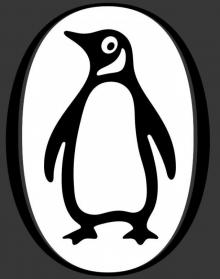 The Surgeon of Crowthorne
The Surgeon of Crowthorne Korea: A Walk Through the Land of Miracles
Korea: A Walk Through the Land of Miracles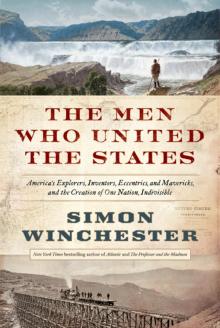 The Men Who United the States: America's Explorers
The Men Who United the States: America's Explorers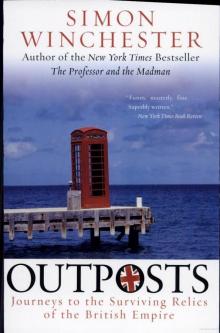 Outposts: Journeys to the Surviving Relics of the British Empire
Outposts: Journeys to the Surviving Relics of the British Empire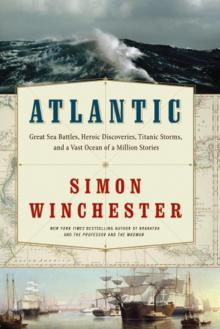 Atlantic: Great Sea Battles, Heroic Discoveries, Titanic Storms
Atlantic: Great Sea Battles, Heroic Discoveries, Titanic Storms The Professor and the Madman: A Tale of Murder, Insanity
The Professor and the Madman: A Tale of Murder, Insanity A Crack in the Edge of the World
A Crack in the Edge of the World The Perfectionists: How Precision Engineers Created the Modern World
The Perfectionists: How Precision Engineers Created the Modern World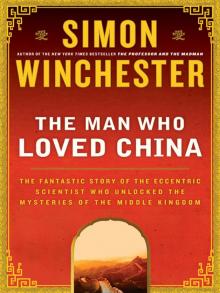 The Man Who Loved China: The Fantastic Story of the Eccentric Scientist
The Man Who Loved China: The Fantastic Story of the Eccentric Scientist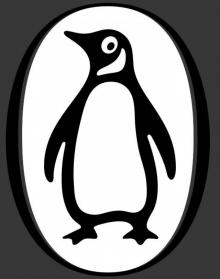 The River at the Center of the World: A Journey Up the Yangtze
The River at the Center of the World: A Journey Up the Yangtze The Fracture Zone: My Return to the Balkans
The Fracture Zone: My Return to the Balkans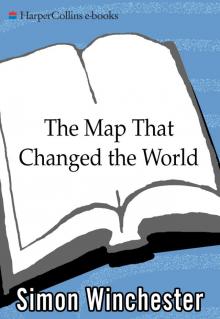 The Map That Changed the World
The Map That Changed the World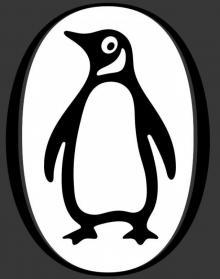 Krakatoa: The Day the World Exploded
Krakatoa: The Day the World Exploded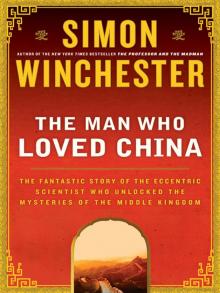 The Man Who Loved China
The Man Who Loved China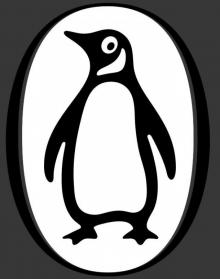 The River at the Centre of the World
The River at the Centre of the World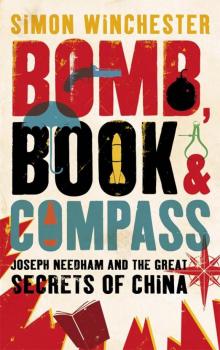 Bomb, Book and Compass
Bomb, Book and Compass The Perfectionists
The Perfectionists The Meaning of Everything
The Meaning of Everything Exactly
Exactly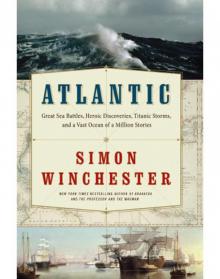 Atlantic
Atlantic Korea
Korea The Fracture Zone
The Fracture Zone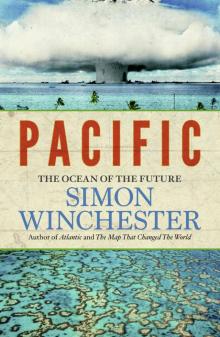 Pacific
Pacific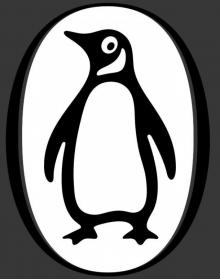 Krakatoa
Krakatoa The Professor and the Madman
The Professor and the Madman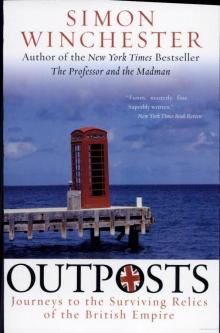 Outposts
Outposts